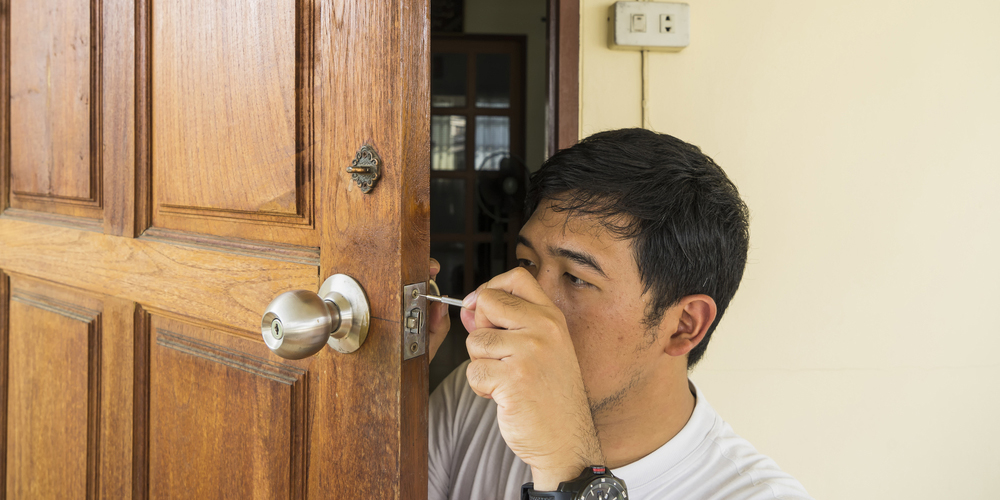by Ralph
○
October 24, 2016
'You’re Using The Wrong Lock: The Dos and Don’ts of Lock Installation' via United Locksmith
https://unitedlocksmith.net/blog/youre-using-the-wrong-lock-the-dos-and-donts-of-lock-installation
UnitedLocksmith,Locksmith,BuyingGuides
Have you ever looked at your lock, and thought, “Well, that can’t be right”. Now you can finally be vindicated. Yes, there are more ways a lock installation can go wrong besides just failing to install it properly. You can also install the wrong type of lock on a door, cabinet, shed, etc… Sometimes the issue will not even seem all that apparent. That is why you need to know just how you may be using your lock wrong, and more importantly, how to use it right.
Double-sided Deadbolts
A double-sided deadbolt is a deadbolt that has two cylinders. One on each side. A standard deadbolt will only have one deadbolt cylinder on the exterior side of the door. On the interior, there will be a thumb turn or similar actuator. A thumb turn allows anyone inside the building to retract or extend the bolt of the lock without using the key. The cylinder requires a key. With double-sided units, a key is required to both lock and unlock the deadbolt no matter what side of the door you are on. A deadbolt is different than a standard keyed knob. Some people think it is because they are harder to pick open, but that is not necessarily true. It has more to do with the bolt, which is extended when the device is locked. The deadbolt is not spring loaded like the latch bolts on most door knobs. This means they cannot be manipulated with credit cards, or devices that try and move the bolt. With double-sided deadbolts there is no way around retracting that bolt, other than using the key.
Dos
- Glass Doors – Doors with glass need double-sided deadbolts. With fragile panes of glass, there is little in the way of a burglar smashing the glass and using the thumb turn on the inside to retract the deadbolt. With a cylinder on both sides, a criminal will not be able to gain entry simply by smashing out the glass on your door.
- Close Windows – Doors with windows very nearby need the same protection as doors with glass on them. Windows will allow the criminal to better see your security, and know whether or not you have a double-sided deadbolt. For that reason, you are more likely to discourage this type of attack.
Don’ts
- Emergency Exits – You cannot use a double-sided deadbolt on a door and still claim that it is an emergency exit. Any boundary that requires a key to open it cannot be used with any ease of egress. If you place a double-sided deadbolt on a door, it is no longer an emergency exit.
Padlocks
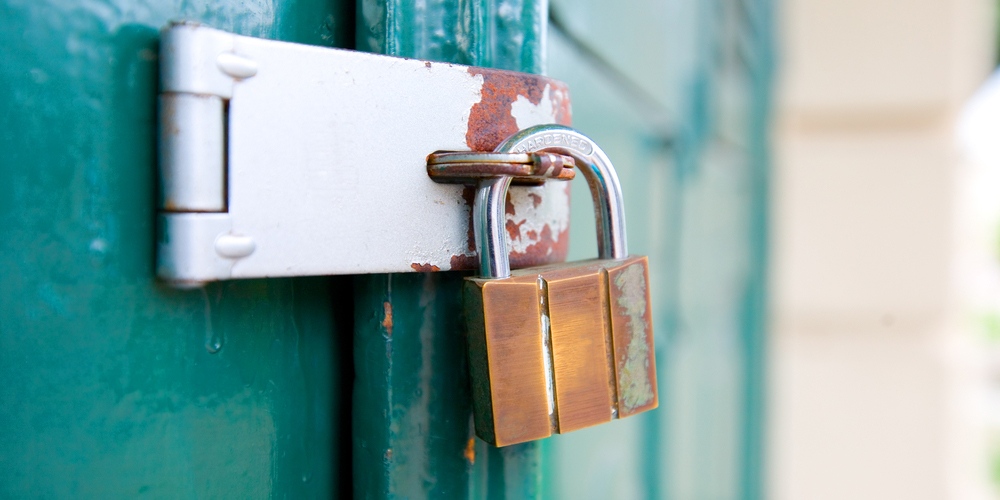
A padlock is different than most other locks. Its main distinguishing characteristic is that it can be removed. The prefix ‘pad’ refers to the mobility of the lock. Essentially, once the lock is open it can be taken off of the area it was securing and moved to a different location. These items will typically have a shackle and lock body. The shackle is a metal bar, often curved like a candy cane, but sometimes just a straight bar (in cases such as shutter padlocks). The shackle will be fastened once it is fully inserted into the lock body, which is often a rectangular prism. Padlocks will open with either a key, four-wheel combination or standard dial combination. When the correct key, or combination is entered, this allows the locking pawl to retract so that the shackle can release.
Dos
- Hasps – Most padlocks will need a solid hasp. It cannot be easier to break than the padlock. A good hasp is a must for using a padlock to secure gates, cabinets, and similar areas. You do not need a hasp for a chain because the links already act as a hasp.
- Gates – Keyed knobs and other security devices are not as secure or practical for a gate. You need a device that is secure no matter if you jump the gate or not. Gates can also be very thin, or have perforations due to bars or other designs, which always allow people to reach through the gate.
- Chains – Using a chain to secure equipment, motorcycles, bikes, etc, requires the use of a padlock. Use the padlock on the links, as if they were a hasp. Tighten the links as close as possible so that there is no slack where the padlock connects to the chain.
- Cabinets – The locks made for cabinets are rarely very good. Getting a high-quality padlock on a cabinet (still secured with a hasp), is more secure and sends a message that you do not want anyone looking inside that container.
Don’ts
- Doors – Putting a padlock on a door is not a good idea. Anytime you can only access a lock from one side, it is a hazard. You do not want to be able to walk into an area and have the possibility of being locked inside with no way to access the lock.
- Shielded Gates – Gates that cannot have their padlock accessed from both sides should only have the padlock accessible from the secure side. If you cannot get out of your backyard, this is a hazard. Never place a padlock on the outside of a gate, if it cannot be opened from the other side.
- Long Shackles – Do not use padlocks with a shackle much larger than the gap in their hasp. When there is too much of the shackle exposed, it is easier to cut of leverage. The shackle should be as close to the metal of the hasp or chain as possible when locked.
Keyed Knobs
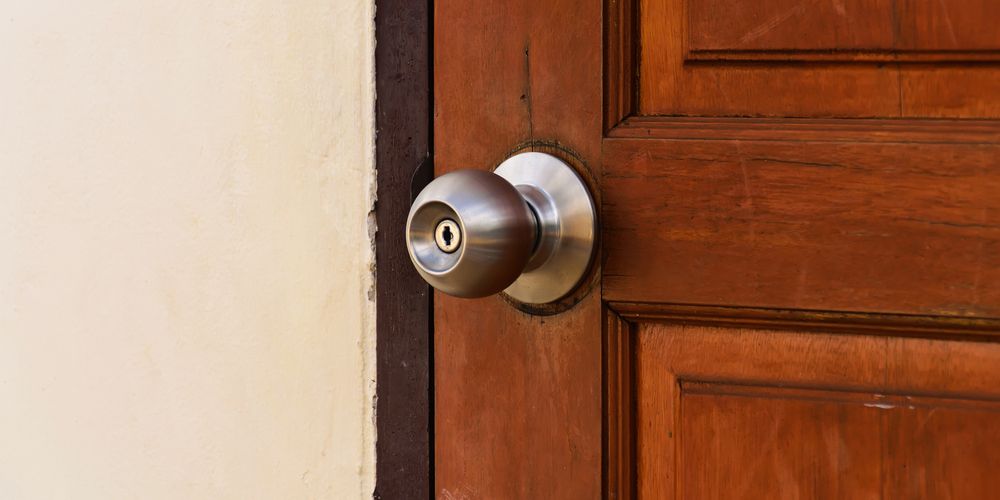
Door knobs with keyed cylinders act to give more security versatility. Keyed knobs have a spring loaded latch with a diagonal cut facing the door jam. This allows the latch to depress as the door is shut against the jam. In order to open the door, the spring latch will need to be retracted. Simply pulling or pushing the door will do nothing to open it. By turning the handle or knob, the spring latch will retract, and the door can be pushed or pulled open. On the side of the keyed knob without a keyway, there will be an actuator of some kind. Often it is a rotating switch that locks the door when the switch is in either a vertical or horizontal resting state. This switch can always be turned to lock or unlock the door. When the door is locked, the knob cannot be turned to retract the spring latch. The keyed side of the knob is only used to open the door, unlike a deadbolt, which can lock the door by turning the key in the opposite direction you would use to open it.
Dos
- Exterior Doors – These locks are ideal for use on your front door. They are by far the best type of handle to place on your perimeter doors. Keyed knobs add one more obstacle for those trying to gain entry into your property without authorization.
- Interior Security – If there is a room inside that home that needs more security, installing a keyed knob allows you to lock off the room while you are away. Something like a privacy lock can only be secured when someone is in the room, but with this device, you can lock the door before shutting it, and then the door is locked.
- Accessibility – For areas you do not want others to be able to lock you out of, a keyed knob is the perfect solution. If you have young children, are renting a room that you still need to access, etc., you do not want someone locking a door to keep you out. It adds peace of mind.
Don’ts
- Keyway Orientation – It is very important that the keyway is always facing in the direction of access control. In the case of a front door, you should never have the actuator outside of the home. For interior doors consider if you want to lock someone inside the room, or keep them locked out. Knowing that locking them in is a hazard during emergencies.
- No Deadbolt – Install on a keyed knob with no deadbolt on the door is a big No-No. The spring loaded latch on these locks makes them vulnerable to credit card attacks. For real security, you need a deadbolt on these locked doors, especially on exterior doors.
Privacy Locks
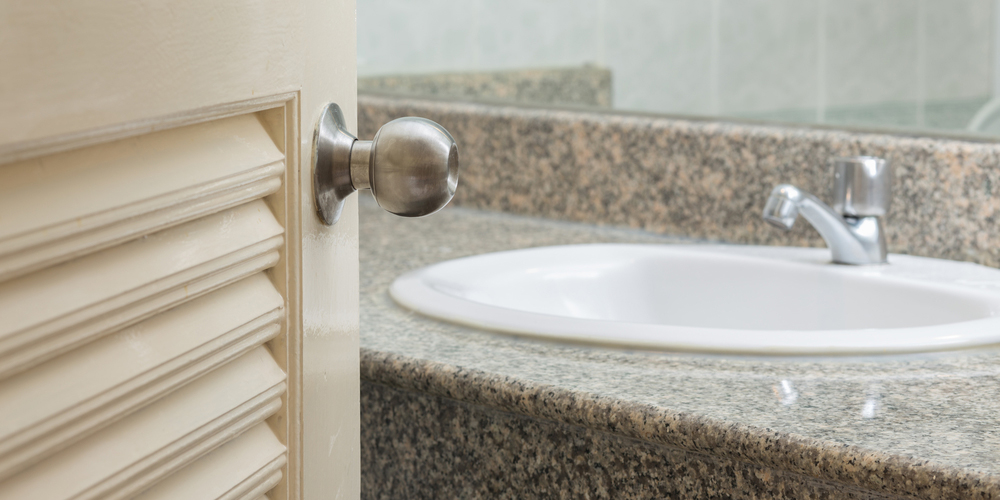
Privacy locks are similar to keyed knobs, with the exception that they do not have a keyed side. They will have a handle or knob with a spring loaded latch, and some form of actuator. The actuators for privacy locks have a wider variety than keyed knobs. Often there will be a push button locking mechanism, that you depress to lock the latch in place. In most cases, simply turning the knob on the side with the button will extend the button and allow the latch to retract as the knob turns. This allows for a quick and easy exit. There are also rose switches, which are a more subtle locking mechanism. Obscured slightly by their unique placement on the door, on the side of the rose plate, visitors can sometimes struggle to lock the door. These too will open when the interior knob is turned. These doors are not very secure, usually having some sort of bypass weakness, which allows someone on the outside to force the door open.
Dos
- Bathrooms – The majority of household accidents occur in the bathroom, so security is not really what you want. People should be able to enter your bathroom in an emergency, but there should still be a lock that makes people think twice when they are trying to enter.
- Bedrooms – If you would like to establish privacy in your bedroom, but are not concerned with security, the privacy lock is perfect for your sleeping quarters. In an emergency, your door will not prevent emergency professionals from entering. But any children or roommates will be able to tell that you do not want to be disturbed.
- Hollow Core Doors – Non-security hollow core doors are perfect for privacy locks. Your door composition is not hardy, so there is no sense getting a high-security lock. Think of a hollow core door as a curtain you can lock. A door designed for privacy pairs nicely with a privacy lock.
Don’ts
- Security – As their name would suggest, these are locks intended for establishing privacy. They are not secure enough to offer any security. A locked privacy lock is meant to send a message to respectful parties, insinuating that you would not like to be bothered.
- Exterior Doors – Installing a privacy lock on an exterior door is not ok. All perimeter doors should have locks intended for security, as they are the most likely to be targeted by thieves and burglars.
Latches
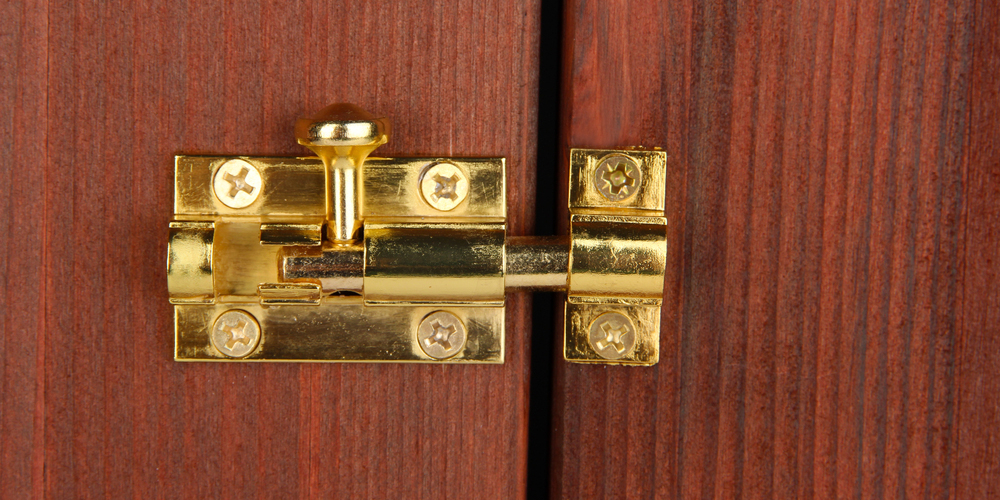
Latch locks are traditionally made up of a mechanical bolt/fastener that works to keep two objects together when the mechanism is engaged but allows them to separate when disengaged. Essentially, when a key is used to operate a latch lock a bar/lever is moved into pocket that keeps it secure, thus engaging the lock on the mechanism. To unlock the latch lock, the key is simply used to raise the lever from the securing brace that keeps it locked. There are several different types of latch locks that each warrant different uses. Unlike some of their counterparts, latch locks tend to be specific when it comes to where they can be placed and where they can be used. For instance, a compression latch lock works exceedingly well on smaller structures like cabinets and bookcases, but it will be rendered ineffective on the exterior door of a home. A majority of the latch locks that are available today are best suited for cabinets, glass show cases as well as agricultural and industrial purposes.
Dos
- Gates – Latch locks are the go to security for gates, these will often have a latch that needs to be lifted to open, but not lifted to close. For greater security on gates with two-way access, there will be a hasp to place a padlock.
- Windows – Most property owners believe that latches fit very nicely on windows. It is not the best for security, but it is better than nothing. Also if someone is going to break your window to try and enter, you have much larger issues.
- Cabinets & Glass Cases – These types of latches are not always intended for security. In cases of natural disasters, it is very important that the contents of cabinets and cases, do not spill out on the floor. It decreases the chances of the items inside from breaking, and it can keep children out.
- Access Panels – Access panel latches tend to be used for much more industrial purposes. They are not specifically built for security, but they are enough to provide easy access to these panels and keep them locked when need be. If you are looking for a more secure option for your access panels, a Pinned Hex Head Cam Latch is your best option.
- Animal Pens – These kind of latches are not primarily used for security purposes. However, they prove to be quite effective at keeping animals and pets contained in demarcated areas. In order to keep pets and animals more secure, consider placing the latch higher up on the pen, so that it is kept out of reach.
Don’ts
- High Traffic – Most latch locks are not primarily lauded for their security benefits. They are usually used to keep things contained and stored away, but not secure. These kind of locks are not well suited for exterior or interior doors that see a good amount of traffic. They offer minimal security and are not built to withstand constant and excessive use.
- Singular Security – These locks are not suitable for singular security. Due to the minimal amount of security they provide, they should not be used as the sole lock on an exterior door (or even interior doors) unless you do not care about the security of said doors. However, if you are determined to use a latch lock on an exterior door (probably for aesthetic purposes) make sure that you pair it with a secure lock.
- Two Way Access – A simple latch will not be enough to secure an area if the latch is accessible from two sides. If your latch can be unlocked from two sides of a boundary, use a padlock to keep the latch from being moved by unauthorized persons.
Conclusion
Lock installation is an easy task that most people can accomplish, but you can always reach out for professional assistance. Hopefully, this post will help guide you to making the right lock installation decisions. In case you have some latch locks installed on your front door, now you know that you should probably get those changed. The locks that you use on your doors should provide you with a sense of security. Now that you are armed with all the information you need, your lock installation should be a breeze. Keep in mind that you should determine what you want out of your locks before you install them. This will help you determine the best type of lock to use. For instance, if you are concerned about security, you would opt to use a deadbolt on an exterior door rather than a privacy lock. Be safe, and use the right locks!
